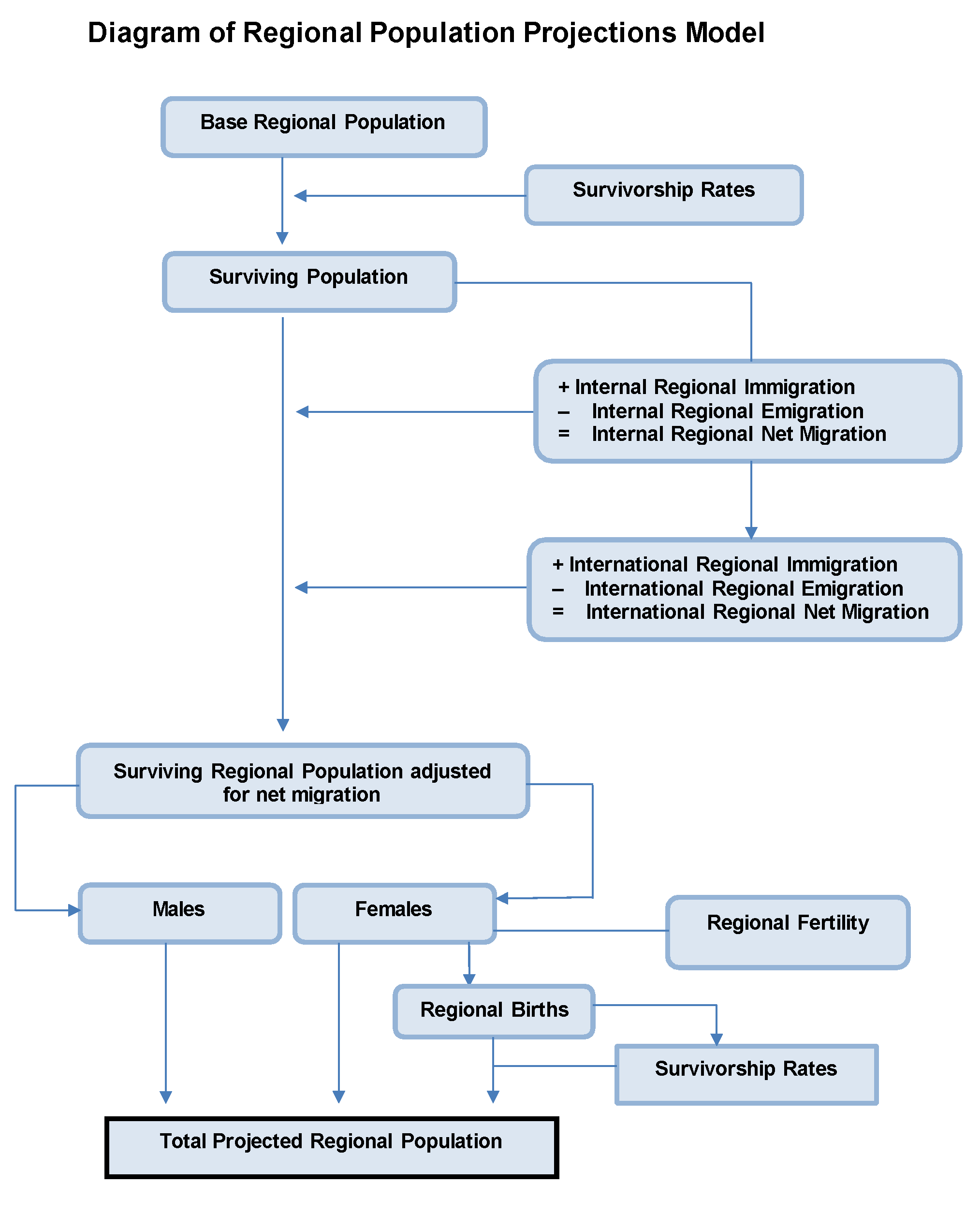Your feedback can help us improve and enhance our services to the public. Tell us what matters to you in our online Customer Satisfaction Survey.
The model used is the demographic component method which projects the 2016 usually resident (base) population forward under the chosen assumptions governing births, deaths and net migration. This is illustrated graphically in the flow chart diagram below. The scenarios used for the regional population projections are consistent with those used in the national population and labour force projections 2017-2051, published in June 2018.
Population projections methodology
After the usually resident based population is aged a year, the appropriate survivorship ratios (see definitions in appendix 2) are applied, accounting for mortality and giving the surviving population. The gross inward and outward migration rates which these groups are assumed to experience in the year are applied to the population. The assumed fertility rates are applied to the female population aged 15 - 49 to give the number of births in the year (adjusted downward for infant mortality) to give the total projected population for that year. This population then becomes the base population for the following year and the process continues from 2017 to 2036.
The assumed outward and inward and internal migration flows are broken down by age and sex on the basis of the agreed distributions. This yields the surviving population adjusted for net migration but without an estimate of the number of children born in the year. The age specific fertility rates for the projection year are applied to the projected female population to estimate the projected births. These births are then divided into males and females on the basis of the ratios experienced for recent years. The appropriate survivorship ratios are then applied to male and female births before these are added in to yield the total projected population.
Limitations
Because of the greater uncertainty attaching to regional as distinct from national population projections, the results for individual Regional Authority areas must be regarded as somewhat tentative. The objective of the regional population projections is to determine how the population of the various regions would evolve in the period to 2036 if recent demographic trends were to continue.

Learn about our data and confidentiality safeguards, and the steps we take to produce statistics that can be trusted by all.